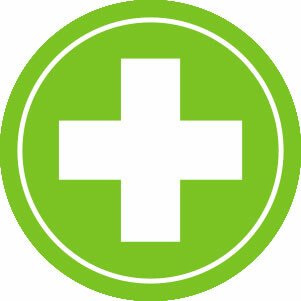
02.09.22 | Covid-19 Resources
Though you will be communicating to people that they should stay home if they feel ill or if someone at home is sick, you must prepare for the possibility that someone may become ill during a church gathering. Identify a space in the building where an ill individual may be taken until they can safely depart and return home. In the event of any medical emergency, call 911 and administer first aid following updated guidelines. (BWC Guidelines for Re-entering Well, p. 4)
Why?
We must be prepared to respond faithfully and safely to emergency medical situations that may arise during in person gatherings. Bear in mind that all responses to illness, injury, and/or medical emergencies must be done using masks and gloves and adhering to all guidelines and directives designed to reduce the transmission of this coronavirus.
When?
Until CDC guidelines are revised.
Implementation Checklist
Congregations should think through emergency scenarios ahead of time to be prepared to respond quickly and safely. Among the preparations:
- Maintain an updated list of congregants who are CPR and first aid certified;
- Confirm that there are fully-supplied First Aid Kits in strategic locations around the church;
- If there are too few CPR and First Aid certified congregants to reasonably expect that at least two certified people may be present at each in-person gathering until all restrictions are lifted, identify a group of adults who are willing to become certified. Consider contacting the Red Cross or American Heart Association to set up virtual training sessions through the church;
- Share this document with those who are CPR and first aid certified;
- Provide greeters and ushers with an updated list of congregants who are CPR and First Aid certified as they will often be the ones who communicate an emergency;
- Talk through what to do if someone has a medical emergency during an in-person gathering; acknowledge the compassionate impulse to “run and help” and identify the health-preserving safety reasons for limiting the number of people who respond to an acute illness or health emergency;
- Establish a space near the sanctuary where someone who becomes ill may be taken during in-person worship. Focus on a space that accommodates the person and those offering First Aid and support; consider the nearest restroom, a classroom, a parlor, etc.;
- Consider having a wheelchair in the building to assist safe transport to the designated space;
- Discuss that a non-life-threatening event such as a bad fall with possibly broken bones or a head injury will preclude moving the individual to the designated space. In such cases, First Aid and assistance will be administered in the sanctuary until an emergency response team responds to the 911 call;
- Think about the people who will safely help the person experiencing a medical emergency get to the ground or a place where they might be cared for;
- Identify who will phone 911 and open entrances to facilitate EMT/ambulance team entry;
- Designate the people who will perform CPR as needed.
- If an adult’s heart stops, you can still help by performing Hands-Only CPR. (The American Heart Association created guidelines for administering pandemic-specific CPR in April 2020).
- Phone 911 and get the AED (Automatic External Defibrillator) if available.
- Cover your mouth and nose with a face mask or scarf, cloth, etc.
- Cover the person’s mouth and nose with a face mask or cloth.
- Perform hands-only CPR: Push hard and fast on the center of the chest at a rate of 100 to 120 compressions per minute. (Hint: think of the tune Row, Row, Row Your Boat at a fast pace with compressions on each beat.) Note: More than one person will be needed to administer compressions at this rate; switch out as needed without major interruptions.
- Continue until an AED is available and/or emergency medical personnel arrive on site.
- Establish who will assist surrounding congregants to step back and allow plenty of room to care for the person.
Additional Resources
American Red Cross: Staying Safe and Helping Others During COVID-19
American Red Cross: Steps for CPR
